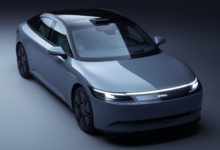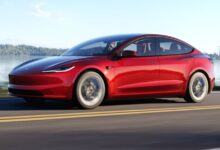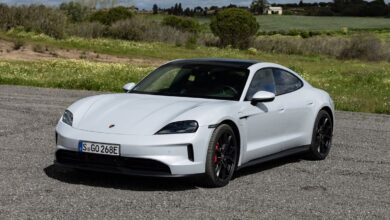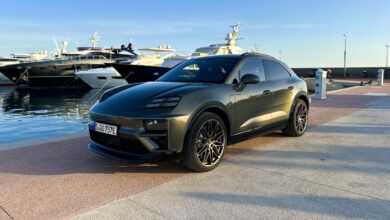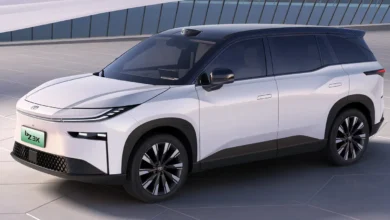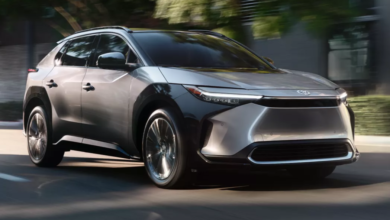Leapmotor T03 Review
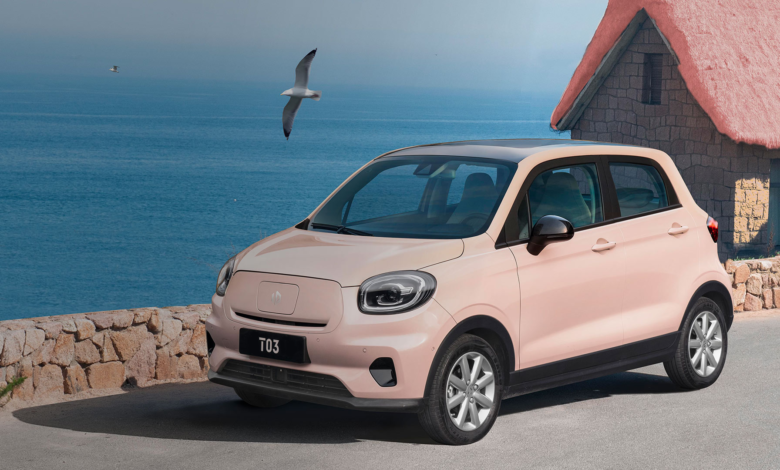
As the electric vehicle market continues to expand, new players are entering the fray, and one such contender is the Leapmotor T03. This compact electric car from the Chinese brand Leapmotor is making its debut in France, poised to challenge established models like the Dacia Spring, the Volkswagen e-UP, and even
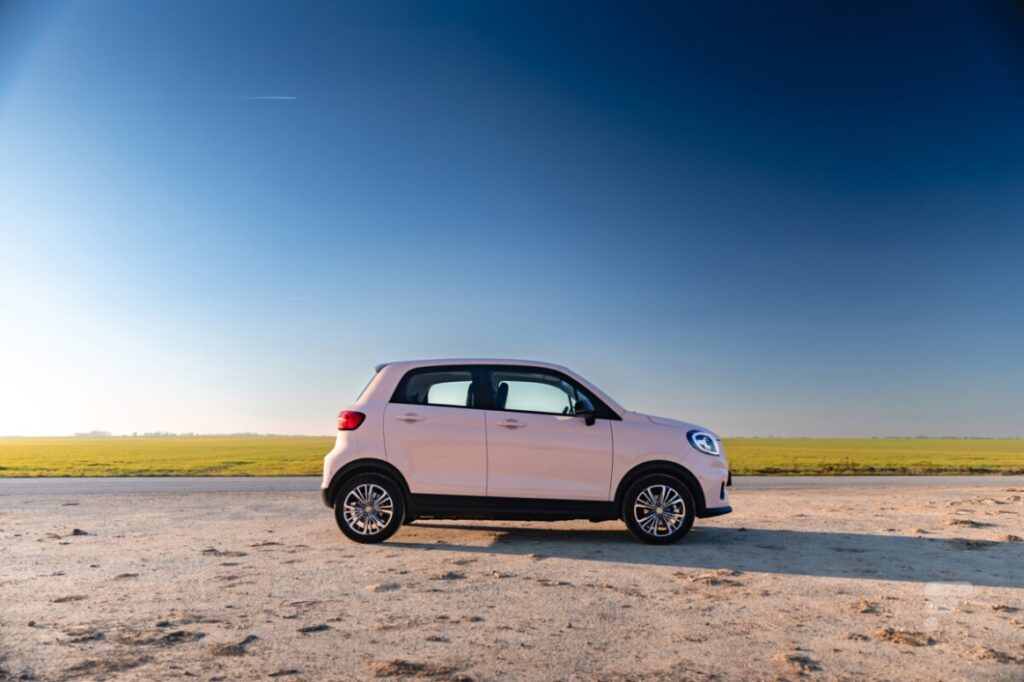
Leapmotor, founded in 2015, has been a known name in China but is now venturing into European markets. The brand made its presence known during the Mondial de l’Auto in Paris, not with its own stand, but through its sole French dealer, EVE Store. While Leapmotor also teased potential future offerings like the C11 and showcased other models like the Seres 3, it’s the T03 that’s currently taking center stage as it seeks to carve out a niche in France’s bustling electric car market.
Design and First Impressions
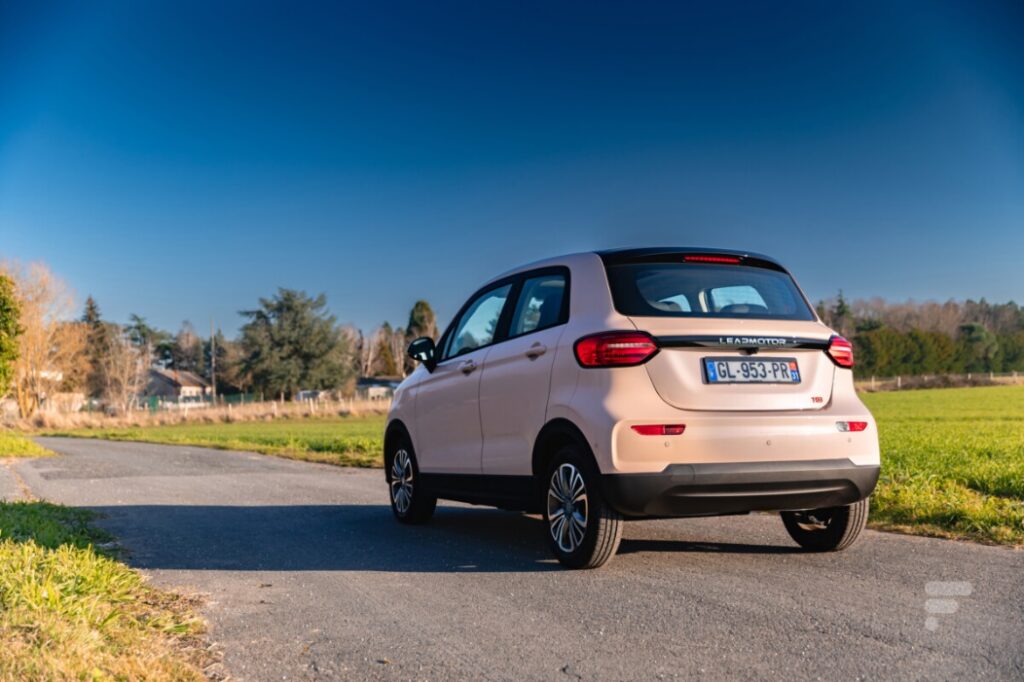
The Leapmotor T03 is distinctly styled to catch the eye. Its design exudes a playful and youthful charm that makes it stand out. The car’s petite dimensions, at just 3.62 meters long, are similar to those of its direct competitor, the Dacia Spring. This size makes the T03 an ideal fit for the narrow and busy streets of French cities. Its compact form factor, combined with very short overhangs and a modest wheelbase, not only adds to its adorable aesthetics but also enhances its maneuverability in urban environments.
Competitive Market Position
The French electric vehicle market is currently led by the Dacia Spring, noted for its affordability and practicality. The T03, with its appealing price point, aims not only to compete with the Spring but also to attract customers from slightly more upscale models like the electric Fiat 500. The question remains, however, whether the T03 can truly penetrate a market that has so far favored familiar European brands.
Leapmotor T03 Performance and Features – Driving Experience:

Unlike some of its contemporaries like the Smart #1, which shares the SEA technical base with other models, the Leapmotor T03 stands on its own with the Heracles platform, a proprietary design by the Chinese brand. This platform is engineered to optimize mass distribution between the front and rear of the vehicle. During our testing, this thoughtful design translated into commendable handling, providing a balanced and responsive driving experience typical of a well-designed city car.
Performance and Drive Modes
The
Where the T03 truly shines is in urban environments. Its compact dimensions and a notably tight turning circle make it ideally suited for navigating narrow city streets. The steering is very flexible, contributing to maneuverability, though it may lack a bit of precision. This can be somewhat adjusted through settings accessible via the touchscreen. Drivers can choose from three driving modes—Normal, Eco, and Sport—which alter the throttle responsiveness and the intensity of regenerative braking to suit different driving conditions.
Suspension and Braking

The suspension system of the T03 is tuned to be flexible, yet it remains somewhat firm when encountering speed bumps, suggesting a compromise to sup
Comfort and Practicality
Despite the city car’s aptitude for urban areas, it becomes less adept when venturing onto winding rural roads or highways. Significant body roll due to the vehicle’s higher profile and a somewhat vague front end detract from its performance in these environments. Additionally, the absence of one-pedal driving, which is available in competitors like the electric Fiat 500, is felt; although, this could potentially be addressed in future software updates.
On the highway, the T03 struggles with power and overtaking capabilities. Aerodynamic noises, particularly from the wheels and mirrors, become more pronounced at higher speeds. Furthermore, fuel consumption escalates with increased spe
Leapmotor T03 Interior
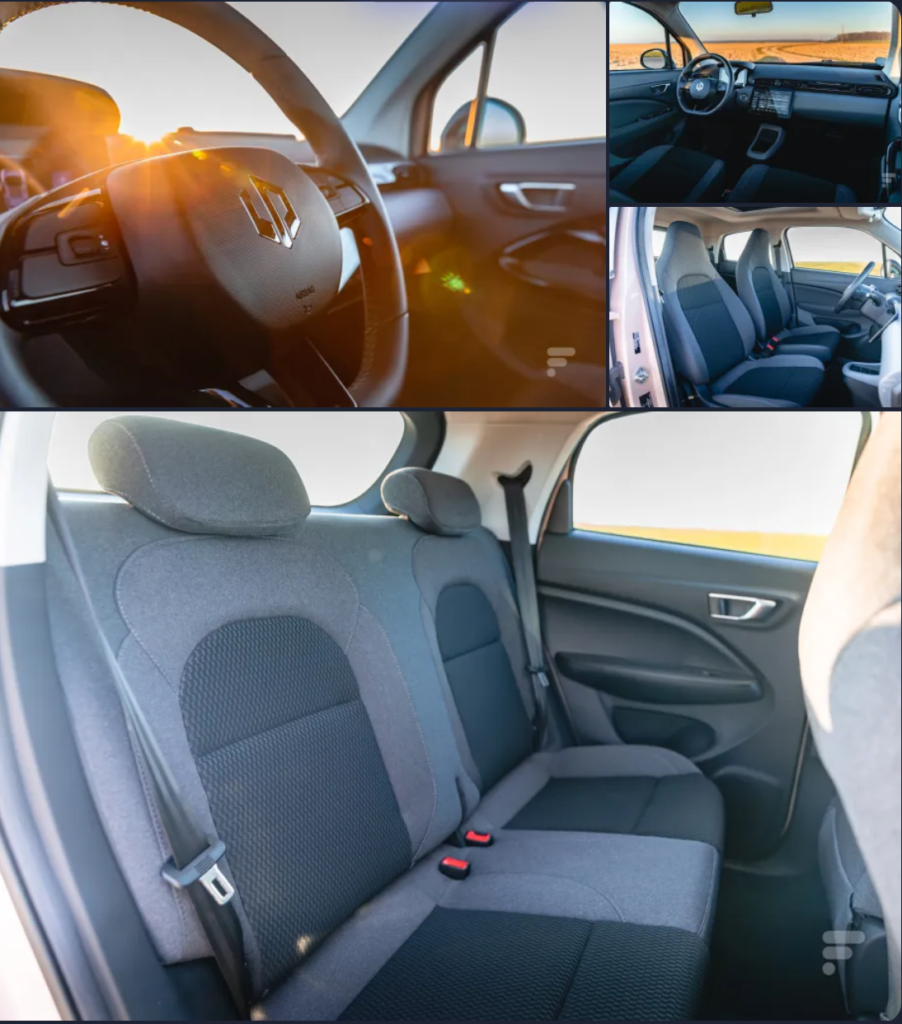
The Leapmotor T03, with its 2.40-meter wheelbase, epitomizes the quintessential city car. It’s designed for urban navigation, so it’s important to temper expectations when it comes to traveling long distances with a full load of passengers. Although the rear seats are reasonably welcoming, offering adequate leg and headroom for two adults, the space is best suited for shorter journeys. Additionally, the narrow door openings can make access to these seats somewhat challenging, which might not be ideal for young families.
Front Cabin and Comfort

Up front, the seats in the T03 are manually adjustable and forego luxuries like heating to maintain affordability. Despite this, they provide a pleasant seating position and are comfortable enough for city trips, even if they could use more lateral support for more spirited driving. The interior design is straightforward, bordering on austere, with its black fabric upholstery and matching dashboard. From an aesthetic standpoint, a bit more flair inside would match its playful exterior design.

The quality of the materials inside the T03 leaves room for improvement, with quite a bit of hard plastic that’s noticeable throughout the cabin. However, the fit and finish are generally satisfactory. The driving area is notably uncluttered, focusing on simplicity and practical ergonomics, with minimal physical controls. Interestingly, those familiar with Tesla will recognize similar switchgear flanking the steering wheel.
Storage and Utility
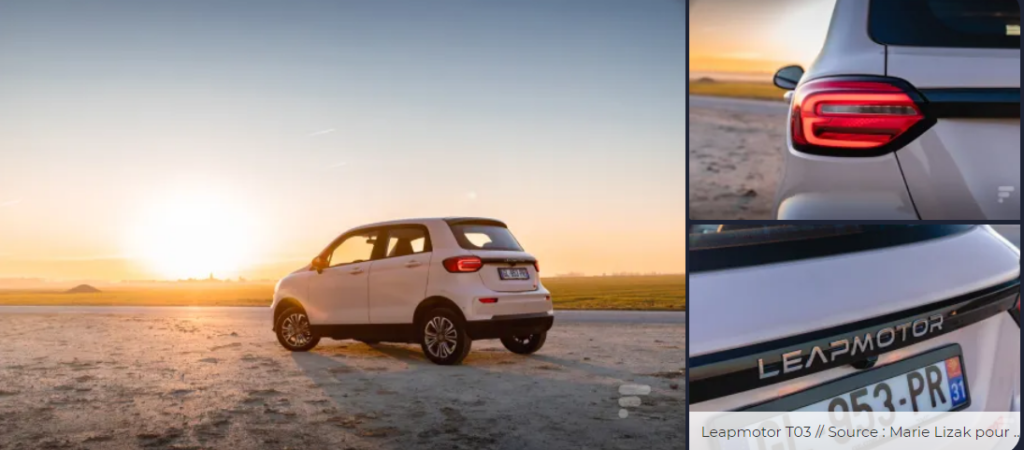
While the center console might lack ample storage options, offering just a small space for a phone and an integrated cup holder, the door bins are surprisingly capacious for a car of this size. The glove compartment is also quite roomy. The trunk offers 210 liters of space, which fares slightly better than the electric Renault Twingo’s 219 liters but falls short of the Dacia Spring’s 290 liters. The rear bench seat folds down in one piece, but it does not create a completely flat loading floor, which could limit some types of cargo.
Autonomy, Battery, and Charging: Optimized for Urban Living

Equipped with a 41.3 kWh lithium-ion battery, the T03 offers a modest range that suits its urban orientation. According to the WLTP cycle, it can achieve up to 280 kilometers on a single charge. In purely urban driving conditions, this range extends to an impressive 417 kilometers, showcasing its efficiency in city traffic. This is quite favorable when compared to its rivals; for instance, the Dacia Spring offers up to 230 kilometers on the combined cycle, while the Fiat 500 with a slightly larger 42 kWh battery promises up to 320 kilometers.
Charging Capabilities
The T03 comes standard with a 6.6 kW onboard charger, facilitating home charging from 30% to 80% in about 3.5 hours using alternating current (AC). For faster charging needs, it can reach 80% in just 36 minutes at a fast-charging station, with a maximum power input capped at 45 kW. Although this might seem limited, it proves more than sufficient for typical daily usage based on our tests.
Lack of Smart Charging Options
One notable drawback is the absence of a linked application for managing charging sessions during off-peak hours, which is becoming an increasingly common feature in electric vehicles. Additionally, this functionality cannot be controlled from the touchscreen within the car. This limitation is particularly notable given the current high energy prices and the strain on electricity networks. It’s an area where Leapmotor could potentially enhance the T03 with a software update to include these smart charging features.
Real-World Energy Consumption
During our testing, the T03 displayed commendable energy efficiency. In urban settings, we observed an average consumption of 12.4 kWh/100 km. This figure rose to 16.6 kWh/100 km on expressways at legal speed limits. On mixed driving routes, the consumption averaged out to 14.4 kWh/100 km, which is quite reasonable. Given that the T03 is available in only one trim without options like aerodynamic rims, these figures should be consistent among all users.




